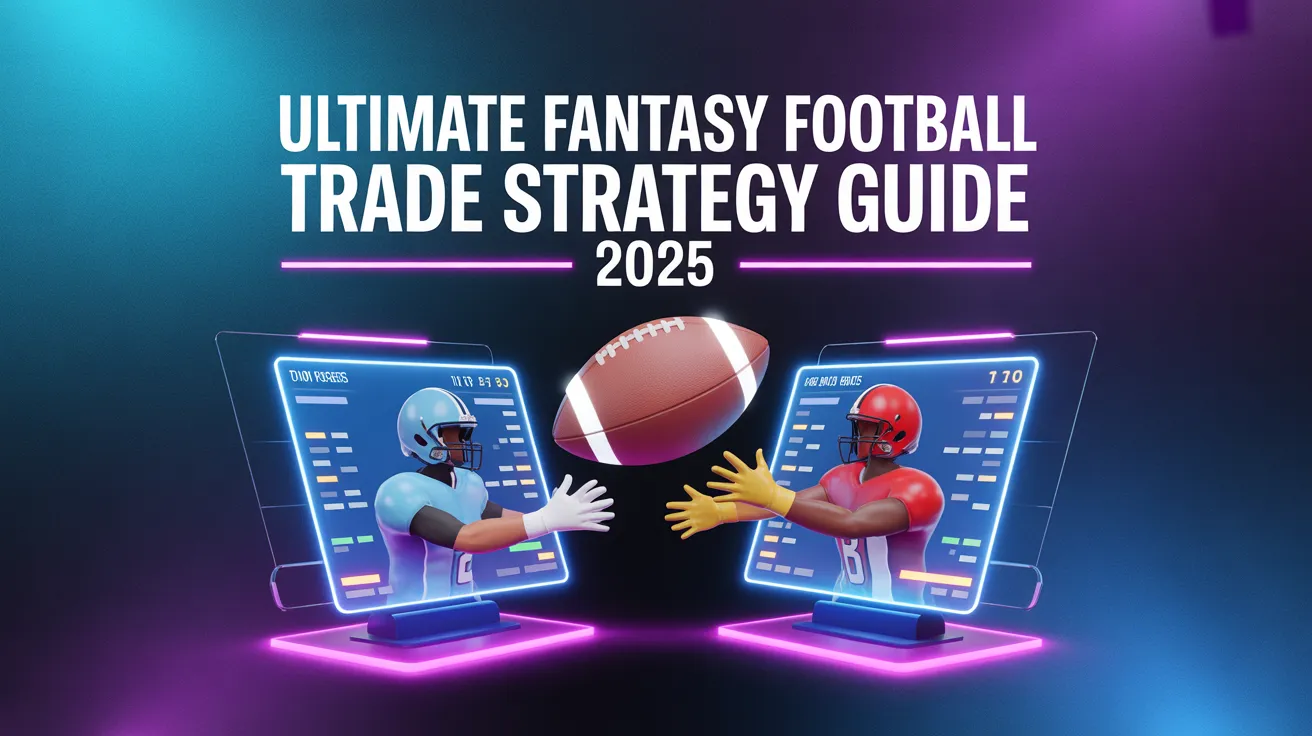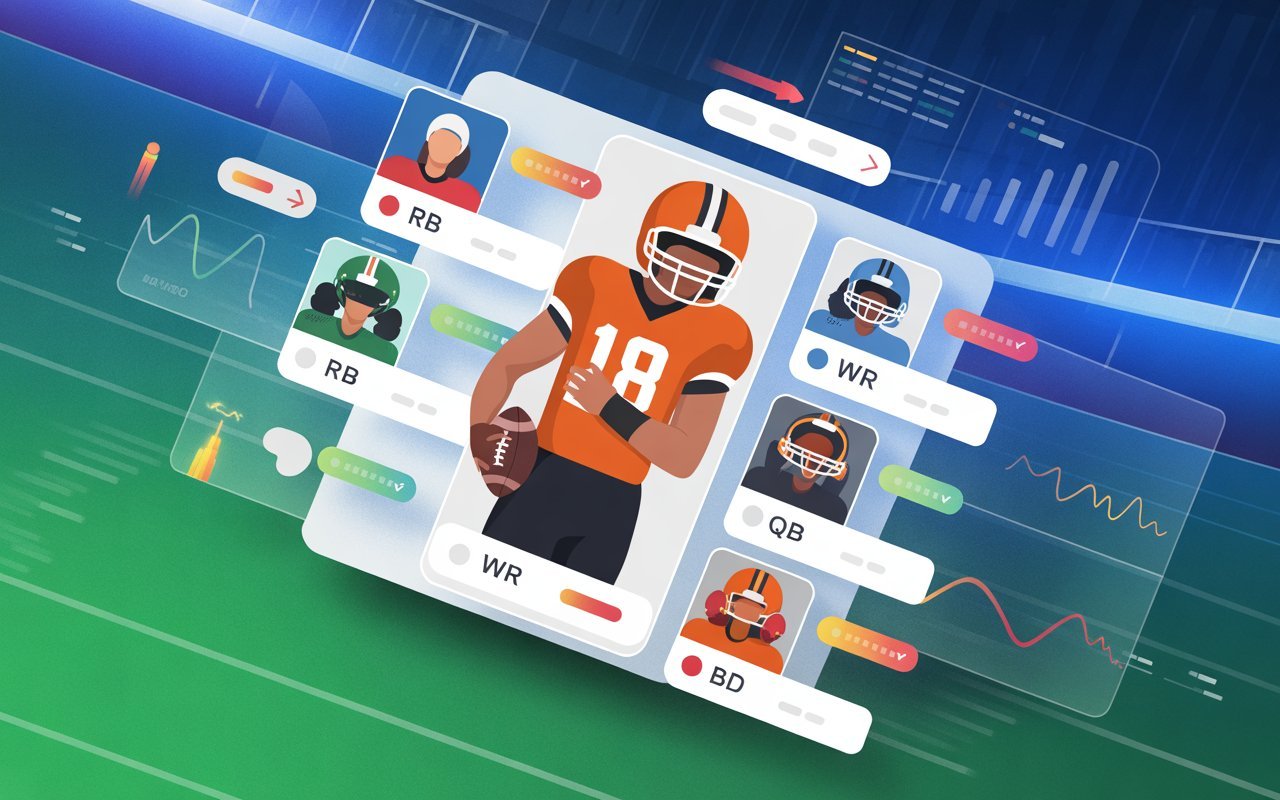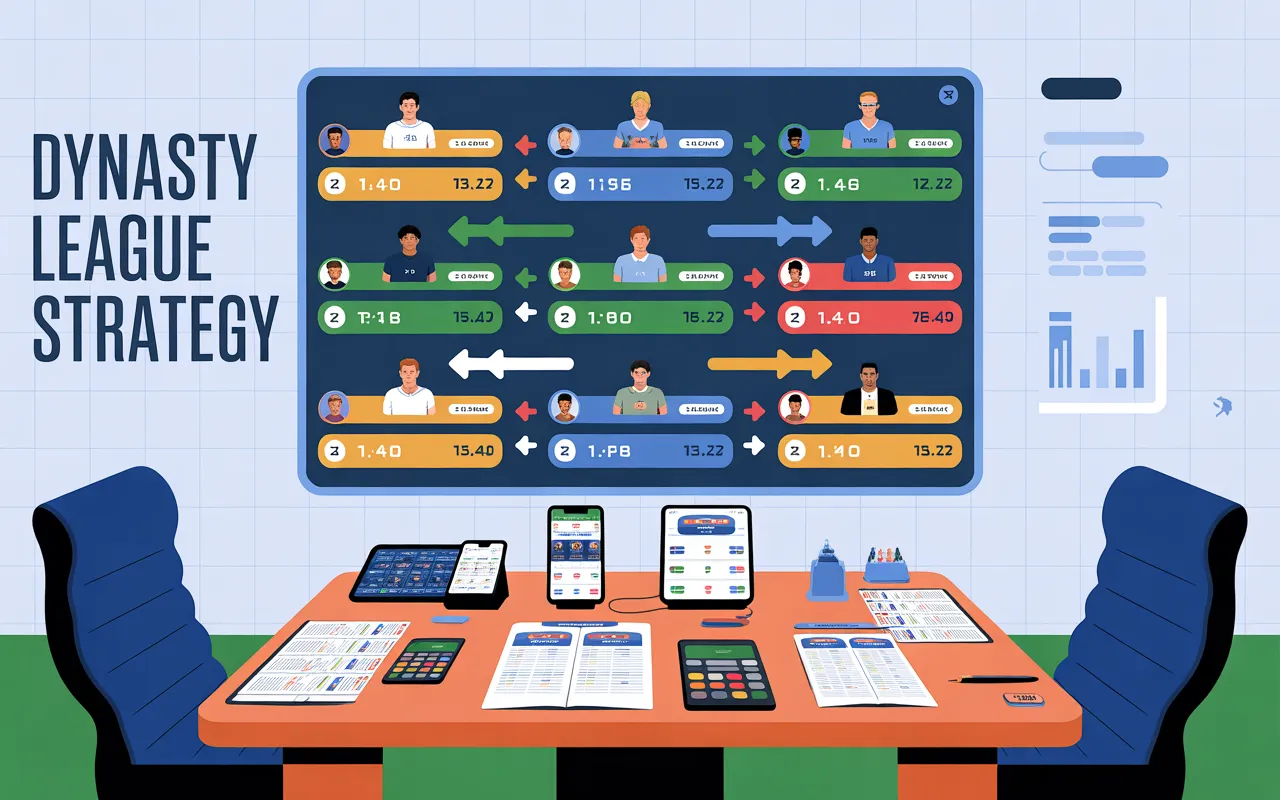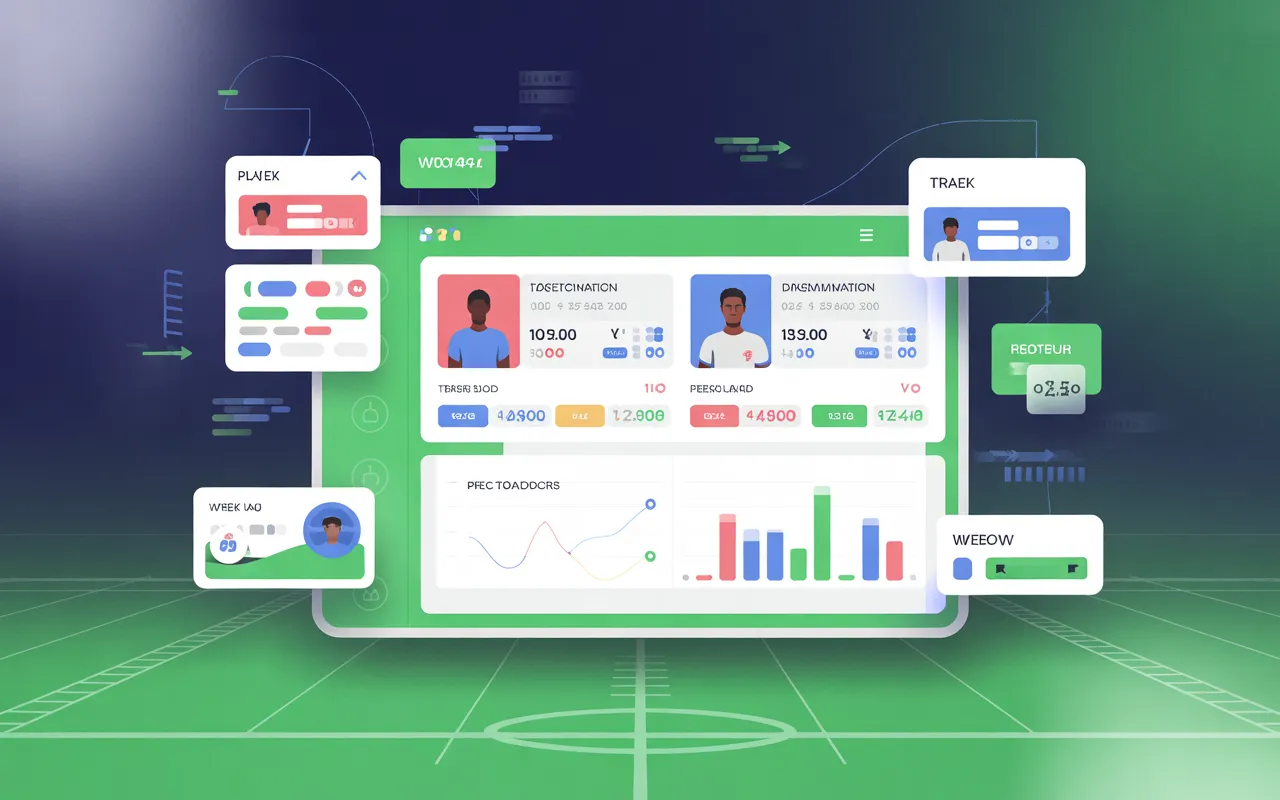Did you know that fantasy football managers who execute 3+ successful trades per season are 67% more likely to reach the playoffs than those who never trade? Yet most fantasy owners approach trading like they’re playing checkers in a chess match. The difference between championship teams and bench warmers often comes down to one critical skill: mastering fantasy football trade strategy.
Trading isn’t just about swapping players it’s about leveraging psychology, timing, and data to build optimal lineups that can carry you through championship season. Whether you’re dealing with bye weeks, injury concerns, or simply trying to upgrade your roster, understanding advanced trade tactics separates the wheat from the chaff in competitive leagues. Our comprehensive guide to fantasy football trading strategies will transform how you approach every trade offer this season.
TL;DR: Fantasy Football Trade Strategy
Master fantasy football trading by targeting Wednesday-Friday when managers are most receptive, understanding different personality types (Analyzers vs. Gut Players), and leveraging timing windows like post-injury panic and bye week desperation.
Focus on psychology over “fair” trades, use advanced metrics like VORP for cross-position comparisons, and avoid emotional trading after bad performances. Managers who execute 5-7 strategic trades per season are 67% more likely to reach playoffs than non-traders.
The Psychology of Fantasy Football Trading: Understanding Your League Mates
Before diving into specific trade strategies for fantasy football, you need to understand that trading is fundamentally a psychological game. Every fantasy owner has different motivations, risk tolerances, and emotional triggers that influence their trading decisions.
Identifying Trade-Friendly Managers
Active managers typically fall into several categories:
- The Analyzer: Uses trade calculators and expert rankings religiously
- The Gut Player: Relies on intuition over metrics
- The News Junkie: Makes quick decisions based on breaking news
- The Loyal Fan: Overvalues players from their favorite NFL teams
Understanding these personality types helps you tailor your approach. When targeting The Analyzer, come armed with data from FantasyPros or Draft Sharks. For The Gut Player, focus on storytelling and future potential rather than cold statistics.
The Fairness Misconception
Many managers obsess over achieving “fair trades” using trade analyzers that promise 85% fairness ratings. Here’s the reality: truly fair trades rarely move the needle for either team. You should seek net positive value while ensuring your trade partner gets something they genuinely need.
Also Read: Fantasy Trade Analyzer Basics
Fantasy Football Trade Strategy Tips for 2025
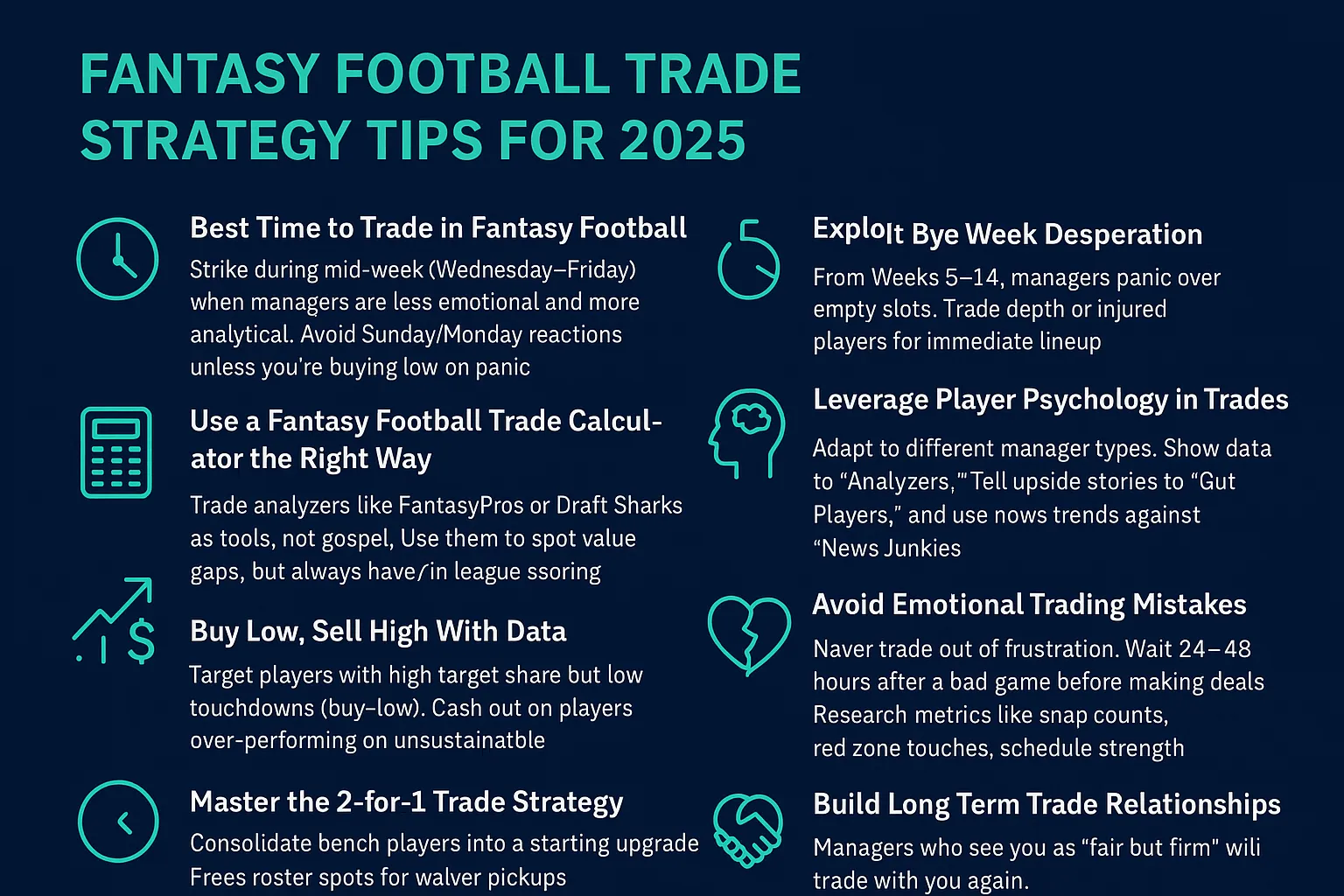
1. Best Time to Trade in Fantasy Football
Strike during mid-week (Wednesday–Friday) when managers are less emotional and more analytical. Avoid Sunday/Monday reactions unless you’re buying low on panic sellers.
2. Use a Fantasy Football Trade Calculator the Right Way
Trade analyzers like FantasyPros or Draft Sharks are tools, not gospel. Use them to spot value gaps, but always factor in league scoring and roster needs.
3. Buy Low, Sell High With Data
Target players with high target share but low touchdowns (buy-low). Cash out on players over-performing on unsustainable touchdown rates (sell-high).
4. Master the 2-for-1 Trade Strategy
Consolidate bench players into a starting upgrade. This frees roster spots for waiver pickups and strengthens playoff lineups.
5. Exploit Bye Week Desperation
From Weeks 5–14, managers panic over empty slots. Trade depth or injured players for immediate lineup upgrades.
6. Leverage Player Psychology in Trades
Adapt to different manager types: show data to “Analyzers,” tell upside stories to “Gut Players,” and use news trends against “News Junkies.”
7. Avoid Emotional Trading Mistakes
Never trade out of frustration. Wait 24–48 hours after a bad game before making deals. Research metrics like snap counts, red zone touches, and schedule strength.
8. Plan Ahead for Playoff Matchups
Target players with favorable Weeks 15–17 schedules. Weather-proof RBs and consistent WRs are safer than boom-or-bust players late in the season.
9. Value Quarterbacks Differently in Superflex
In 1QB leagues, streaming works. In Superflex, QB12–18 range carries huge value—trade aggressively for upgrades.
10. Build Long Term Trade Relationships
Managers who see you as “fair but firm” will trade with you again. Repeat deals win championships more than one-off lopsided trades.
Advanced Trade Timing Strategies
The Golden Windows for Trading
Fantasy football trade timing strategy revolves around identifying optimal windows when other managers are most receptive to deals:
Post-Game Emotional Trading (Sunday night – Monday morning):
- Managers panic after poor performances
- Buy-low opportunities emerge on talented players with bad weeks
- Target owners of players who just suffered nagging injury scares
Wednesday-Thursday Sweet Spot:
- Injury reports create urgency
- Waiver wire claims haven’t processed yet
- Managers have time to analyze without game-day emotions
Bye Week Desperation (Weeks 5-14):
- Fantasy football bye week trade strategy becomes critical
- Managers need immediate help over long term value
- Perfect time for 2-for-1 trade strategy consolidations
Leveraging Information Arbitrage
Smart traders monitor multiple news engine sources to identify opportunities before they become public knowledge. When coaching staff announce depth chart changes or beat reporters hint at suspension concerns, you have a 2-4 hour window to act before fantasy experts update their rankings.
Beginner vs. Advanced Fantasy Football Trade Strategies (2025)
| Level | Beginner Trade Strategy Tips | Advanced Fantasy Football Trade Strategy Tips |
|---|---|---|
| Timing | Trade mid-week (Wed–Fri) when emotions are low. | Target post-injury news and bye week desperation for maximum leverage. |
| Player Value | Use a fantasy football trade calculator for guidance. | Use advanced metrics like VORP, target share, and regression analysis. |
| Approach | Aim for “fair” trades that fill mutual roster needs. | Build package deals and 2-for-1 trades to consolidate depth into elite starters. |
| Psychology | Focus on obvious roster needs (injury or bye coverage). | Profile league mates: exploit “Gut Players” or “News Junkies” with tailored offers. |
| Risk Level | Keep trades simple (RB for WR, starter for starter). | Take calculated risks by buying low on slumping stars or selling high on over-performers. |
| Playoff Prep | Ensure coverage for upcoming bye weeks. | Target playoff schedules (Weeks 15-17) and weather-proof players. |
| League Formats | Stick to standard or PPR basics. | Adapt to dynasty, superflex, and auction trade dynamics. |
Position-Specific Trading Mastery
Running Back Trade Dynamics
RB trading requires understanding shelf life and coaching decisions. Running backs over 28 with high touch counts are prime sell-high candidates, even if they’re producing top 10 numbers currently.
Key RB Trading Principles:
- Target handcuff players before the primary back shows wear
- Buy-low on talented backs with early-season bad luck
- Package aging veterans with wide receivers for younger assets
Wide Receiver Strategy
WR values fluctuate more on targets and air yards than touchdown variance. When evaluating wide receivers, focus on opportunity metrics over raw points per game.
WR Trading Framework:
- Target receivers with increasing target share but low touchdowns
- Sell-high on touchdown-dependent players (6+ TDs through 8 games)
- Value WR3 with WR1 upside in keeper leagues
The Tight End Dilemma
Trading tight ends fantasy football strategy requires patience. The position is so unpredictable that many managers undervalue consistent producers. If you own a top 5 TE, you can often extract WR2 or RB2 value.
Quarterback Considerations
Fantasy football quarterback streaming trades work better than waiver wire pickups in deeper leagues. Target QB with favorable upcoming schedules rather than chasing last week’s performance.
Advanced Trade Structures
Mastering the 2-for-1 Trade
Fantasy football 2-for-1 trade strategy serves multiple purposes:
- Consolidates bench players into starters
- Frees roster spots for waiver wire adds
- Helps win-now teams upgrade at key positions
When to Offer 2-for-1:
- You’re sending depth for an upgrade
- Partner has roster clog at a position
- You need to clear space before key waiver priority claims
When to Accept 2-for-1:
- You’re receiving the best player in the deal
- Your bench lacks quality depth
- Injury concerns make depth valuable
The Art of Package Deals
Fantasy football blockbuster trade guide principles apply when multiple positions need addressing. Large trades work when both teams have complementary needs.
Blockbuster Trade Elements:
- Each team gets their #1 need addressed
- Include future considerations in dynasty leagues
- Structure deals around playoff run timing
League-Specific Strategies
Keeper League Considerations
Fantasy football trades in keeper leagues require balancing current championship hopes with future value. Rookie players often carry premium value due to their long term upside and favorable keeper costs.
Keeper Trading Principles:
- Value draft position and contract length
- Sell-high on aging veterans to contenders
- Target young players from rebuilding teams
Superflex Dynamics
Superflex fantasy football trade strategy completely changes quarterback valuations. In superflex formats, QB trades often headline blockbuster deals.
Superflex Considerations:
- Quarterbacks 10-18 in ECR become valuable assets
- Streaming QB becomes nearly impossible
- Package deals often center around quarterback upgrades
Negotiation Psychology and Tactics
The Opening Offer Strategy
Fantasy football trade negotiation tactics start with your initial proposal. Research shows that anchoring effects influence final trade terms significantly.
Effective Opening Moves:
- Start 15-20% above your target value
- Include a throw-in player they’ve previously shown interest in
- Frame the trade around their team needs, not yours
Handling Rejection Like a Pro
Most initial trade offers get rejected. The key is maintaining relationships for future negotiations.
Post-Rejection Protocol:
- Thank them for considering
- Ask what adjustments would work
- Table the discussion for 48-72 hours
- Return with modified offers addressing their concerns
Building Long-Term Trading Relationships
Successful fantasy football trade negotiation tactics extend beyond single deals. Active managers who build reputations for fair trades find more willing partners throughout the season.

My Personal Trading Evolution (Case Study)
I learned my most valuable fantasy football lesson during the 2023 season when I panicked after Alvin Kamara had two consecutive poor weeks. Instead of holding through his bye week, I traded him and Jamaal Williams for Jonathan Taylor, who was dealing with ankle issues.
That lopsided trade taught me the importance of research over emotional reactions. Kamara went on to finish as the RB5, while Taylor struggled with injuries all season. The experience reinforced that successful trades require patience and objective analysis, not knee-jerk reactions to short-term performance.
Now I always ask myself: “Am I trading because of genuine concerns about long term value, or am I just frustrated with last week’s results?” This simple question has saved me from numerous panic trades to avoid.
Data-Driven Trade Analysis
Using Advanced Metrics
Modern trade analyzers incorporate sophisticated metrics beyond basic points projections:
- VORP (Value Over Replacement Player)
- Strength of schedule analysis
- Target share trends
- Red zone opportunity metrics
The 85% Rule Fallback
While FantasySP and similar trade tools provide Fair Trade Ratings, remember that their algorithms can’t account for your specific league context or timing needs. Use these tools as starting points, not final authorities.
Regression Analysis for Trade Targets
Fantasy football trade regression targets involve identifying players whose current production doesn’t match their underlying metrics:
Positive Regression Candidates:
- High target share with low touchdown totals
- Red zone touches without scoring production
- Quality matchups ahead with poor recent results
Negative Regression Candidates:
- Unsustainable touchdown rates (8+ TDs through 8 games)
- Declining target share with maintained production
- Upcoming difficult schedule stretch
Situational Trading Mastery
Post-Injury Trading Windows
Fantasy football trades after injury news create unique opportunities. The key is distinguishing between panic selling and legitimate concerns about shelf life.
Injury Trading Framework:
- Minor injuries: Target buy-low opportunities from panicking owners
- Major injuries: Immediately assess handcuff availability
- Uncertain timelines: Avoid trades until clearer information emerges
Playoff Push Strategy
Fantasy football trades for playoff push focus on acquiring players with favorable championship schedules and proven playoff performance history.
Late-Season Trading Priorities:
- Schedule strength for weeks 15-17
- Weather-proof players for outdoor stadiums
- Proven performers over boom-or-bust candidates
Advanced Concepts for Experienced Traders
Trading Defense and Kickers
Fantasy football defense trading strategy seems counterintuitive, but DST units with favorable playoff matchups carry real value in competitive leagues.
D/ST Trading Situations:
- Package with skill position players
- Target specific matchups (Miami in December)
- Use as sweeteners in larger deals
Fantasy football kicker trade value remains minimal, but K can serve as deal-breakers when negotiations stall over minor value differences.
Rookie Window Trading
Fantasy football rookie trade strategy depends on league format and timing within the season.
Redraft Rookie Trading:
- Buy-low after poor preseason/early games
- Sell-high after breakout performances
- Target rookie RB in favorable situations
Dynasty Rookie Considerations:
- Draft capital matters more than early production
- Quarterback rookies often undervalued initially
- Consider coaching stability and offensive systems
Common Trading Mistakes to Avoid
The Fairness Trap
Fantasy football panic trades to avoid often stem from obsessing over trade calculator fairness ratings rather than actual team improvement.
Fairness Misconceptions:
- Perfectly fair trades rarely help either team significantly
- Your goal is net positive value, not mathematical equality
- Context matters more than raw player values
Emotional Trading Patterns
Fantasy football revenge trades emerge when personal relationships cloud judgment. Never trade based on spite or frustration with specific opponents.
Emotional Trading Red Flags:
- Trading immediately after losses
- Targeting specific opponents rather than best values
- Making deals to “prove a point”
Timing Mistakes
Poor timing ruins otherwise smart trade strategies:
- Trading handcuffs right before injury concerns
- Sell-high attempts after news breaks publicly
- Buy-low offers immediately after poor games (wait 24-48 hours)

Technology and Tools for Modern Trading
Essential Trade Analysis Platforms
FantasyPros NFL Trade Analyzer Tool provides comprehensive player values and expert consensus rankings (ECR). Their consensus rankings aggregate opinions from dozens of fantasy experts, providing balanced perspectives on player ratings.
Draft Sharks offers format-specific trade calculators for dynasty, superflex, and PPR leagues. Their 3D projections account for league scoring system variations.
ESPN and other platform trade analyzers provide basic fairness assessments, though they lack the sophistication of dedicated fantasy tools.
Leveraging News Aggregation
Fantasy Football News Aggregator services help identify breaking news before it impacts trade values. Speed matters when coaching decisions or depth chart changes create immediate buy-low opportunities.
Mobile Trading Apps
Modern fantasy assistants streamline trade negotiations through push notifications and quick lineup analysis. However, never rely solely on automated recommendations for significant decisions.
Building Your Season-Long Trading Strategy
Early Season Setup (Weeks 1-4)
Focus on roster evaluation and identifying trade block candidates:
- Monitor preseason performance vs. draft expectations
- Identify bench players with standalone value
- Build relationships with active managers
Mid-Season Execution (Weeks 5-10)
This period offers peak trading opportunities:
- Bye week desperation creates favorable deals
- Injury patterns become clearer
- Playoff positioning motivates trades
Playoff Preparation (Weeks 11-14)
Championship season trading focuses on schedule strength and proven production:
- Target players with favorable playoff matchups
- Sell-high on players with difficult late-season schedules
- Prioritize floor over ceiling in championship weeks
League Format Considerations
Standard vs. PPR Trading
PPR scoring dramatically changes wide receiver valuations. Reception-heavy players like slot receivers carry premium value in PPR formats.
Standard Scoring Priorities:
- Touchdown-dependent players more valuable
- Red zone running backs prioritized
- Big-play wide receivers over volume catches
Deep League Strategies
Deeper leagues (14+ teams) create scarcity that changes trading dynamics:
- Bench players carry more value
- Streaming becomes nearly impossible
- Waiver wire options extremely limited
Auction League Dynamics
Fantasy football auction league trades must consider salary implications and budget management alongside player values.

Expert Insights and Industry Perspective
According to JJ Zachariason, host of the Late Round Podcast and fantasy football analyst, “The biggest mistake I see managers make is treating every trade like it needs to be perfectly equal. The best trades are when both teams get exactly what they need, even if the ‘values’ don’t match up perfectly on paper.”
Scott Connor from FantasyPros emphasizes the importance of league context: “A fair trade in a 10-team league might be completely lopsided in a 14-team dynasty format. Understanding your specific league dynamics is more important than any trade calculator.”
Real-World Success Story
Marcus Chen from San Antonio, Texas used advanced trade timing strategy to win his 12-team PPR league championship in 2024. After identifying that three managers in his league consistently overreacted to bad weekly performance, Marcus systematically targeted buy-low candidates after poor games.
His most successful trade involved acquiring CeeDee Lamb and Josh Jacobs for Miles Sanders, Robert Woods, and Breece Hall during Week 6, right after both Lamb and Jacobs had disappointing games. The trade analyzer rated the deal as only 72% fair, but Marcus correctly identified that both acquired players were due for positive regression.
The Mathematics of Trading Success
Research from fantasy football platforms shows that managers who complete 5-7 trades per season have 23% higher playoff rates than those completing 0-2 trades. However, the success rate drops significantly for managers attempting 10+ trades, suggesting that quality matters more than quantity.
Optimal Trading Frequency:
- 3-5 trades: Beginner-friendly range
- 5-7 trades: Experienced manager sweet spot
- 8+ trades: Requires advanced negotiation skills
Conclusion: Building Your Trading Empire
Fantasy football trade strategy separates championship teams from also-rans. Success requires combining psychological insights, timing, data analysis, and negotiation skills into a cohesive approach that evolves throughout the season.
Remember that trading is fundamentally about relationships and mutual benefit. Focus on creating win-win scenarios rather than dominating every negotiation. Build trust with league mates, leverage information advantages ethically, and always keep your championship goals in perspective.
The managers who master advanced trade structures, understand positional psychology, and execute data-driven decisions will consistently outperform those who rely on gut instincts or basic trade calculators.
Ready to transform your trading game? Bookmark this comprehensive guide and explore our advanced fantasy football trade tactics for even more winning strategies. Your championship run starts with your next successful trade.
Frequently Asked Questions On Fantasy Football Trade Strategy
When is the best time during the week to propose fantasy football trades?
Wednesday through Friday represents the optimal trading window. Wednesday allows managers to process weekend results without emotional reactions, while Friday creates urgency before weekend games. Avoid Monday and Tuesday when managers are still emotional from recent performance, and Sunday when everyone’s focused on lineup decisions.
How do you determine fair value when trading players at different positions?
Use VORP (Value Over Replacement Player) to compare cross-position trades. A top 5 tight end might equal a WR2 in value due to positional scarcity. Trade calculators from FantasyPros and Draft Sharks help normalize values across positions, but consider your league’s specific scoring system and roster requirements.
Should you trade away your best player in a 2-for-1 deal?
Generally avoid trading your best player unless you’re receiving two starters who significantly upgrade your lineup. The “best player wins” rule applies in most scenarios. However, if you’re receiving a WR1 and RB2 for your elite running back, and those players address major roster holes, the depth might justify the trade.
How do bye weeks affect trading strategy throughout the season?
Bye weeks create leverage opportunities from Weeks 5-14. Target managers facing multiple starters on bye the same week – they’ll often accept slightly unfavorable trades for immediate lineup help. Plan ahead by identifying which weeks you’ll need streaming options, and trade for players with complementary bye weeks to your core roster.
What’s the biggest mistake fantasy managers make when trading?
The biggest mistake is emotional trading – making deals based on frustration, panic, or revenge rather than objective analysis. Panic trades after bad weeks destroy season-long value. Always wait 24-48 hours after disappointing performances before considering trades. Research underlying metrics like targets, red zone touches, and snap counts rather than reacting to raw points.

